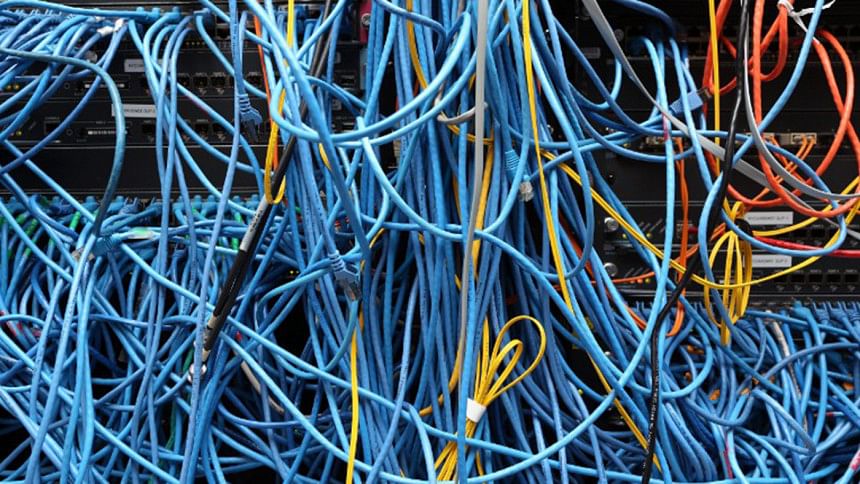Internet is running out of room – but we can save it

Are we running out of internet? It might sound like an odd question, but researchers met at the Royal Society in London this week to discuss a coming internet "capacity crunch", and what we might do about it.
The meeting sparked headlines warning of a "full" internet and the potential need for data rationing, but the reality is more nuanced. The crunch is real, caused by fast growth of online media consumption through the likes of Netflix and Youtube, but physics and engineering can help us escape it. The internet just needs a few tweaks, reports New Scientist.
Fear of a capacity crunch stems from a hard physical truth – there is a limit to the amount of information you can cram down any communications channel, fibre-optic cable or copper wire. Discovered in 1940 by Claude Shannon, this limit depends on the channel's bandwidth – the number of frequencies it can transmit – and its signal-to-noise ratio (SNR).
Digital Traffic Jam
The information capacity of optical fibres – the light-carrying pipes that form the backbone of the internet – can be increased simply by increasing the power of the light beamed through them. This boosts the signal that encodes, say, a Netflix show so that it dominates over the inherent noise of the fibre, making it easier to read at the other end.
Researchers have spent decades finding ways to amplify signals, increasing the capacity of fibre already in the ground and keeping up with the growth of internet traffic reports the New Scientist.
But that trick has hit a dead end. If you up the power beyond a certain point, the fibre becomes saturated with light and the signal is degraded. This limit means fibres as we currently use them are nearing their full capacity. "You can't get an infinite amount of capacity in a fibre," Andrew Ellis at Aston University in Birmingham, UK, who organised the meeting, told New Scientist.
René-Jean Essiambre of French communications firm Alcatel-Lucent presented research suggesting the limit is around 100 terabits per second, or 250 Blu-ray discs-worth. The internet's fibre systems could reach this in the next five years, he warned.
Fight fibre with fibre
Don't cancel the Netflix account just yet, though. Polina Bayvel of University College London presented work designed to compensate for distortion in the optical fibre at high power. Her technique analyses interference within the fibre as light travels through. It then rapidly calculates how the light was distorted, allowing the recipient to clean up the signal at the other end. "You receive a mess, and by carrying out these steps you are able to reconstruct the signal digitally," she said.
David Richardson of the University of Southampton, UK, is investigating new fibres that contain multiple cores for transmitting data, effectively many fibres in one. These are more difficult to make than conventional fibres because the cores are tiny and must keep their shape across kilometre-long cables, but they're capable of handling much more data.
New Scientist also reports that techniques like these will be key to fighting capacity crunch, says Ellis. But if researchers aren't able to scale up and commercialise their solutions, rationing or other restrictions on internet use may be the only option.
"I don't see a crisis in the internet," Andrew Lord, a researcher at UK telecom company BT, told the meeting. "I've got a lot of faith in the ingenuity of people to keep delivering the goods," he told New Scientist.

 For all latest news, follow The Daily Star's Google News channel.
For all latest news, follow The Daily Star's Google News channel. 



Comments